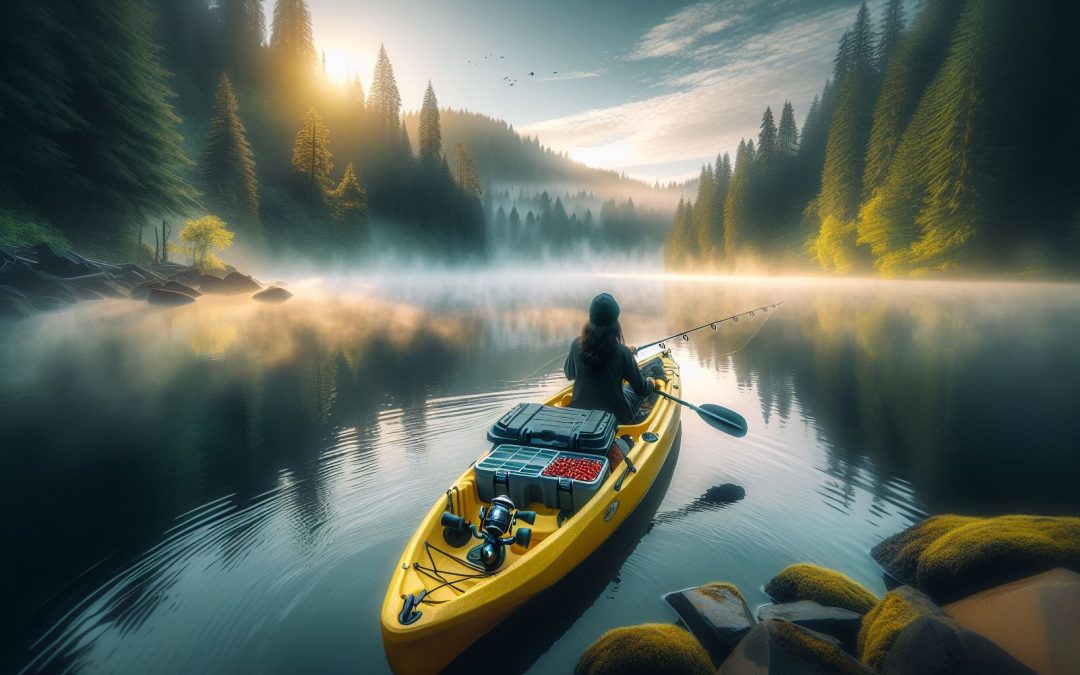The Ultimate Guide to Fishing Kayaks
Introduction
Fishing is a timeless activity that combines the tranquility of being on the water with the thrill of the catch. But to take your fishing experience to the next level, you might want to consider investing in a fishing kayak. These versatile vessels offer a unique way to enjoy your favorite pastime. In this blog post, we’ll delve into everything you need to know about fishing kayaks.
What is a Fishing Kayak?
A fishing kayak is a small, lightweight boat designed specifically for anglers. They are typically equipped with features like rod holders, tackle boxes, and sometimes even live wells for storing your catch. Fishing kayaks can be powered by paddles, pedals, or even a small motor, depending on the model.
Why Choose a Fishing Kayak?
Pros of Fishing Kayaks:
- Accessibility: Fishing kayaks can reach places that larger boats can’t, allowing you to explore secluded fishing spots.
- Affordability: Compared to motorboats, fishing kayaks are generally more affordable, require less maintenance, and have no fuel costs.
- Exercise: Kayaking is a great form of low-impact exercise. It can help improve your cardiovascular fitness and increase muscle strength.
- Stealth: Kayaks are quiet and can approach fish without scaring them away, giving you an advantage.
- Environmentally Friendly: Kayaks have no emissions and do not harm aquatic ecosystems.
Cons of Fishing Kayaks:
- Limited Space: Kayaks have limited space for gear and catches compared to larger boats.
- Weather Dependent: Kayaks are more susceptible to weather conditions. Strong winds and waves can make kayaking challenging and potentially dangerous.
- Physical Demand: Kayaking requires physical effort, which might be challenging for some people.
- Stability: While many fishing kayaks are stable, they can tip over, especially if you’re new to kayaking or if you’re fishing in rough waters.
- Speed: Kayaks are slower than motorized boats, so getting to your fishing spot might take longer.
Where do fishing kayaks work best?
Fishing kayaks are versatile and can be used in a variety of water bodies. However, they work best in the following environments:
-
Lakes: Fishing kayaks are excellent for lake fishing. They can easily navigate the calm waters and reach narrow or shallow areas where fish often hide.
-
Rivers: Kayaks can handle the moving waters of a river, especially those designed for whitewater conditions. They’re great for reaching spots along the riverbank that are inaccessible from the shore.
-
Coastal Areas: Some fishing kayaks are designed for the ocean and are great for coastal fishing. They can handle waves and currents better than standard kayaks.
-
Estuaries and Inlets: These areas often have a high concentration of fish, making them ideal for kayak fishing. The calm and shallow waters are perfect for kayaks.
-
Ponds: Small bodies of water like ponds are great for kayak fishing. You can easily cover the entire area in a kayak.
Types of Fishing Kayaks
There are several types of fishing kayaks to choose from, each with its own set of advantages.
Sit-On-Top Kayaks: These are the most user-friendly. They are stable, easy to get in and out of, and there is a lot of room for storage.
Sit-Inside Kayaks: These kayaks are good for moving fast and far on the water. They are also a good choice for cold weather or rough water.
Inflatable Kayaks: These are the most portable and easy to store. They are surprisingly durable and can be a good option for those with limited storage space.
Tandem Kayaks: These kayaks are designed for two people. They are a good choice if you like to fish with a buddy.
Essential Kayak Fishing Gear
Apart from the kayak itself, you’ll need some essential gear for a successful fishing trip.
Paddle: Your paddle is your primary means of propulsion on the water. Lightweight, durable paddles are the best choice.
Life Vest: Safety should always be a priority when you’re on the water. Choose a comfortable, well-fitted life vest.
Fishing Rods and Reels: You’ll need at least one good quality fishing rod and reel. Consider a shorter rod for ease of maneuverability.
Tackle Box: A tackle box will store all your hooks, lures, line, and other fishing gear.
Anchor: An anchor will keep you in one spot once you’ve found a good fishing spot.
Dry Bag: A dry bag is essential to keep your gear dry.
Also consider Trolling motors, storage, and electronics!
Conclusion
Fishing kayaks offer a fantastic way to enjoy the great outdoors and indulge in your favorite pastime. With the right kayak and gear, you’ll be ready to hit the water and reel in your next big catch. Happy fishing!
